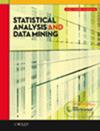利用回波状态网络的特征重要性描述气候路径
IF 3.6
4区 数学
Q3 COMPUTER SCIENCE, ARTIFICIAL INTELLIGENCE
引用次数: 0
摘要
美国 2022 年国防战略将气候变化列为对国家安全的严重威胁。气候干预方法,如平流层气溶胶注入,已被作为减缓战略提出,但这些行动对复杂气候系统的下游影响还不甚了解。开发算法技术,量化与气候事件(即气候路径)相关的源变量和影响变量之间的关系,将有助于为政策决策提供信息。数据驱动的深度学习模型已成为高度非线性关系建模的强大工具,可为气候变量关系的特征描述提供途径。在本文中,我们将探索使用回声状态网络(ESN)来描述气候路径。ESN 是一种专为时间数据设计的计算效率高的神经网络变体,最近的研究提出 ESN 是预测时空气候数据的有用工具。然而,ESN 与其他神经网络一样,都是不可解释的黑箱模型。模型缺乏透明度对理解变量关系构成了障碍。为了解决这个问题,我们开发了时空数据背景下的 ESN 特征重要性方法,以量化模型捕捉到的变量关系。我们进行了一项模拟研究,以评估和比较特征重要性技术,并在再分析气候数据中演示了该方法。在气候应用中,我们考虑了包括 1991 年皮纳图博火山爆发在内的时间段。这一事件是一次重要的平流层气溶胶注入,可作为人为平流层气溶胶注入的替代物。我们能够利用所提出的方法来描述与这一事件相关的路径变量之间的关系,这些关系与气候科学家之前确定的关系是一致的。本文章由计算机程序翻译,如有差异,请以英文原文为准。
Characterizing climate pathways using feature importance on echo state networks
The 2022 National Defense Strategy of the United States listed climate change as a serious threat to national security. Climate intervention methods, such as stratospheric aerosol injection, have been proposed as mitigation strategies, but the downstream effects of such actions on a complex climate system are not well understood. The development of algorithmic techniques for quantifying relationships between source and impact variables related to a climate event (i.e., a climate pathway) would help inform policy decisions. Data‐driven deep learning models have become powerful tools for modeling highly nonlinear relationships and may provide a route to characterize climate variable relationships. In this paper, we explore the use of an echo state network (ESN) for characterizing climate pathways. ESNs are a computationally efficient neural network variation designed for temporal data, and recent work proposes ESNs as a useful tool for forecasting spatiotemporal climate data. However, ESNs are noninterpretable black‐box models along with other neural networks. The lack of model transparency poses a hurdle for understanding variable relationships. We address this issue by developing feature importance methods for ESNs in the context of spatiotemporal data to quantify variable relationships captured by the model. We conduct a simulation study to assess and compare the feature importance techniques, and we demonstrate the approach on reanalysis climate data. In the climate application, we consider a time period that includes the 1991 volcanic eruption of Mount Pinatubo. This event was a significant stratospheric aerosol injection, which acts as a proxy for an anthropogenic stratospheric aerosol injection. We are able to use the proposed approach to characterize relationships between pathway variables associated with this event that agree with relationships previously identified by climate scientists.
求助全文
通过发布文献求助,成功后即可免费获取论文全文。
去求助
来源期刊

Statistical Analysis and Data Mining
COMPUTER SCIENCE, ARTIFICIAL INTELLIGENCEC-COMPUTER SCIENCE, INTERDISCIPLINARY APPLICATIONS
CiteScore
3.20
自引率
7.70%
发文量
43
期刊介绍:
Statistical Analysis and Data Mining addresses the broad area of data analysis, including statistical approaches, machine learning, data mining, and applications. Topics include statistical and computational approaches for analyzing massive and complex datasets, novel statistical and/or machine learning methods and theory, and state-of-the-art applications with high impact. Of special interest are articles that describe innovative analytical techniques, and discuss their application to real problems, in such a way that they are accessible and beneficial to domain experts across science, engineering, and commerce.
The focus of the journal is on papers which satisfy one or more of the following criteria:
Solve data analysis problems associated with massive, complex datasets
Develop innovative statistical approaches, machine learning algorithms, or methods integrating ideas across disciplines, e.g., statistics, computer science, electrical engineering, operation research.
Formulate and solve high-impact real-world problems which challenge existing paradigms via new statistical and/or computational models
Provide survey to prominent research topics.
 求助内容:
求助内容: 应助结果提醒方式:
应助结果提醒方式:


